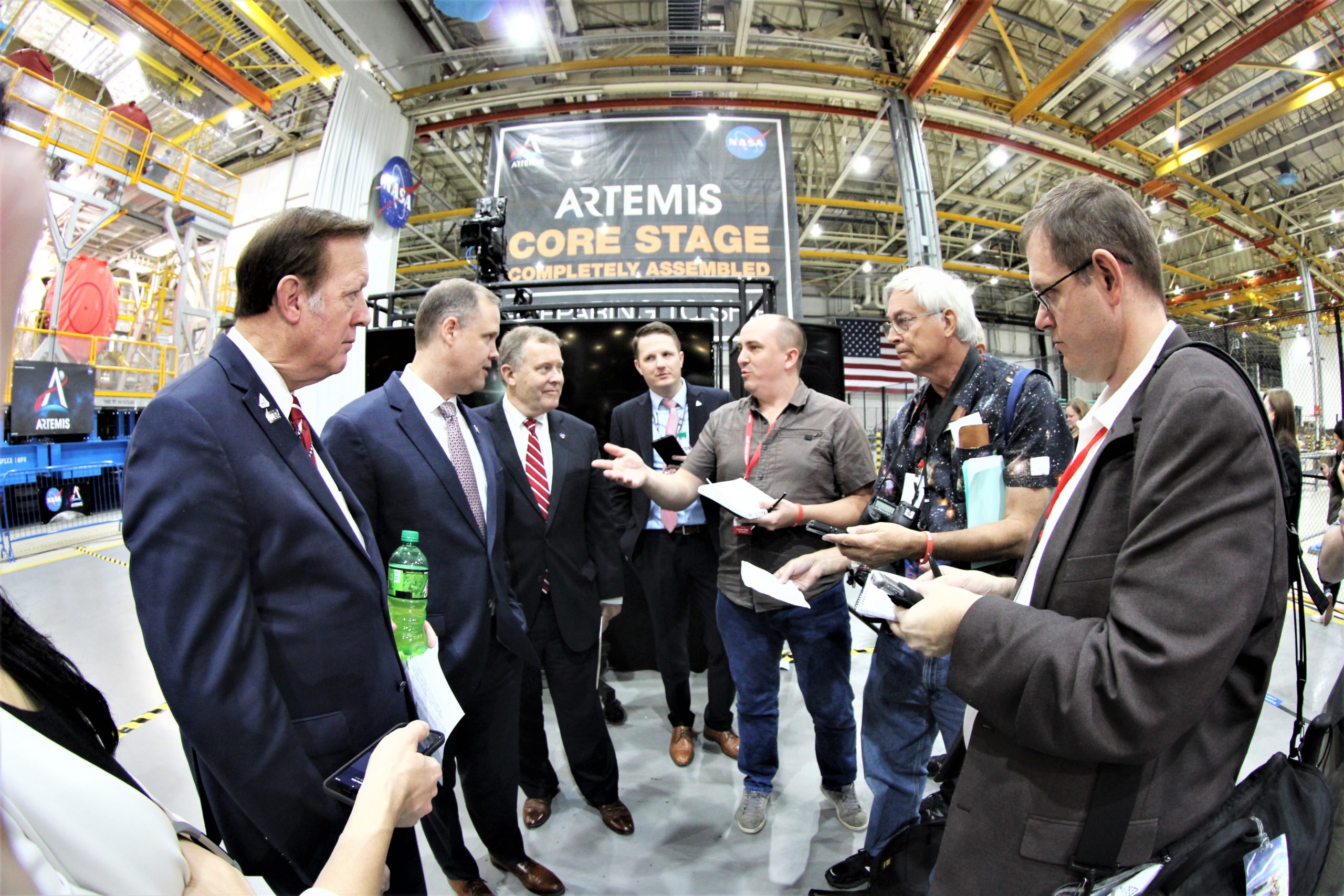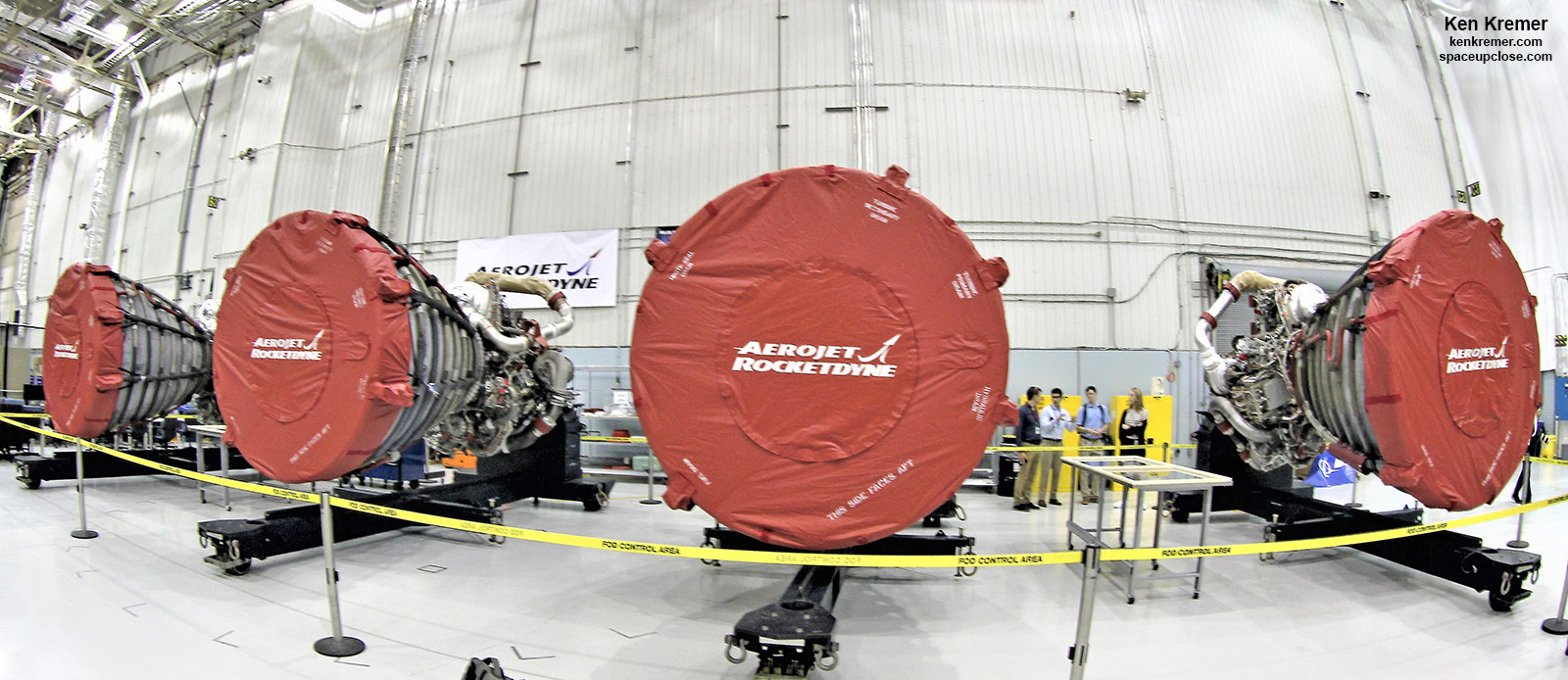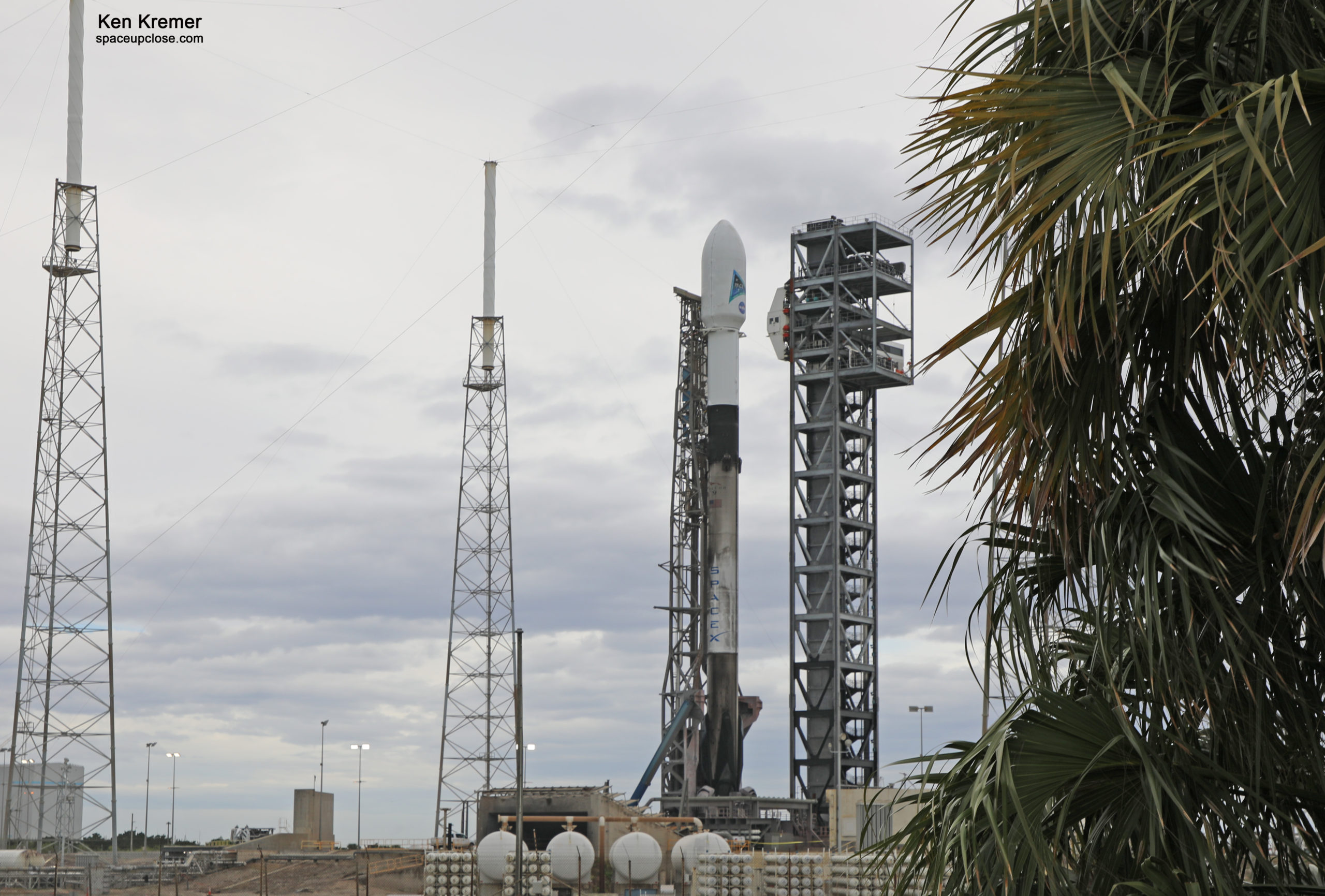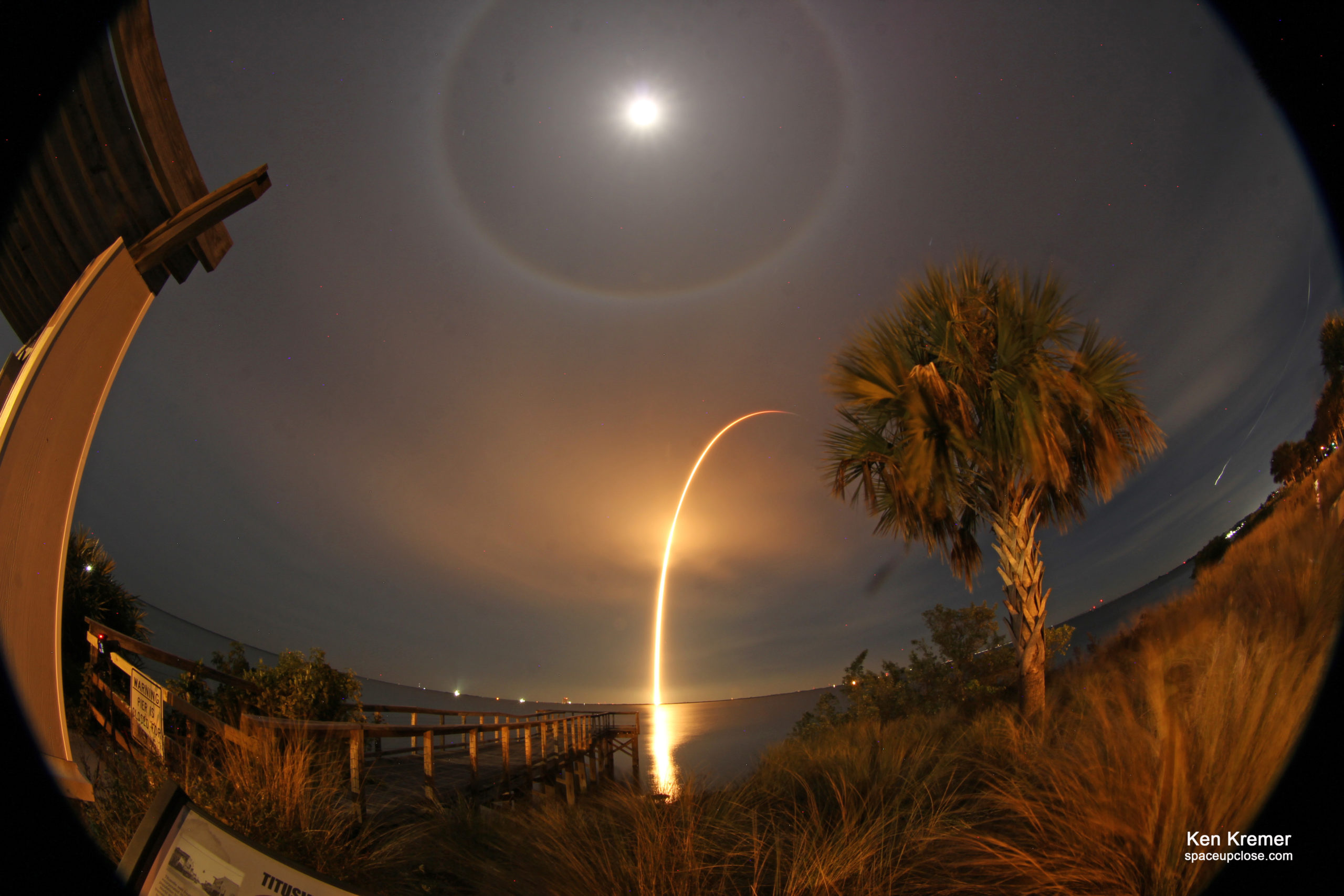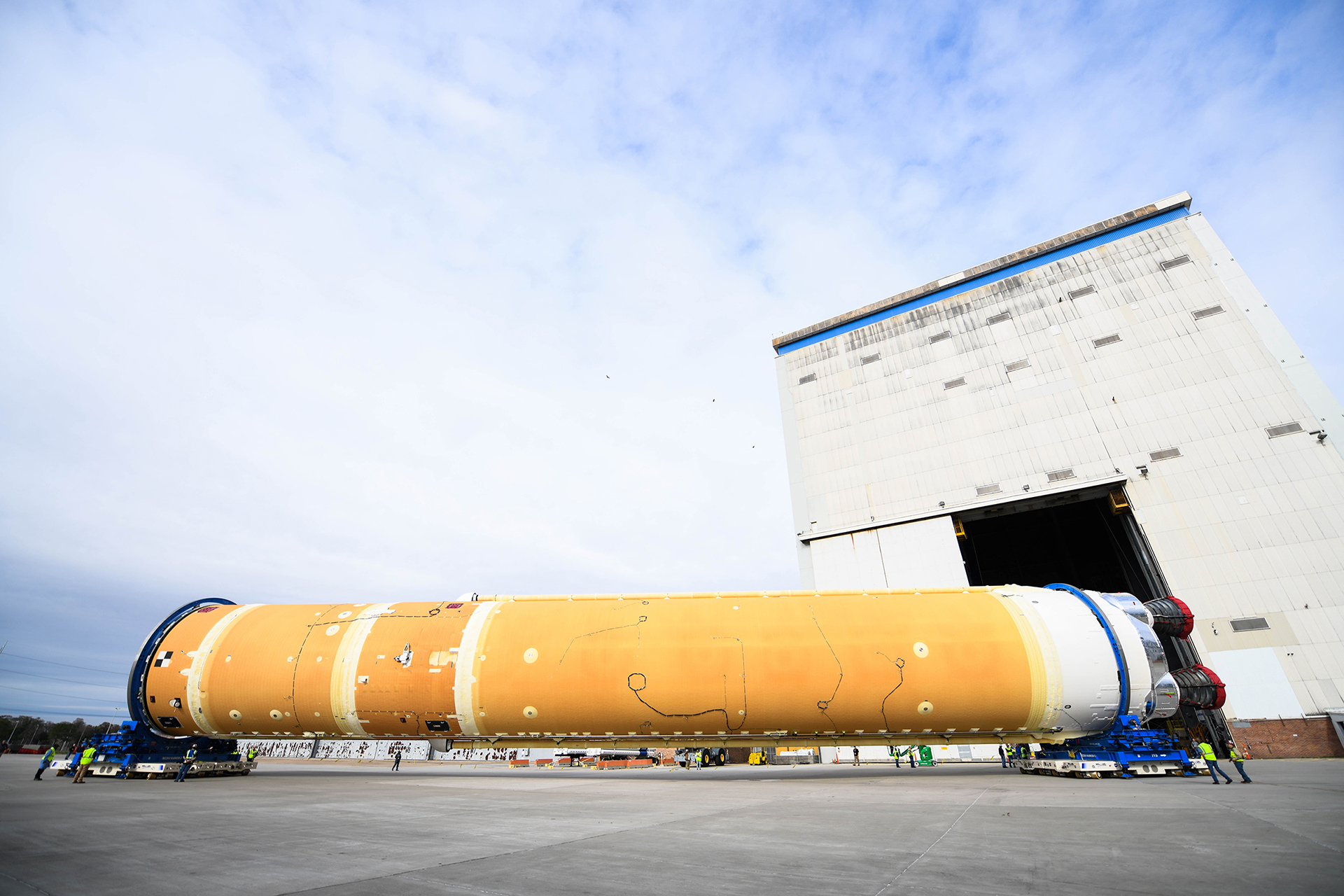
For Spaceupclose.com and RocketSTEM
MICHOUD ASSEMBLY FACILITY, LA/CAPE CANAVERAL, FL – The NASA, Boeing and Aerojet Rocketdyne team is now in the final stages of preparing the first completed Space Launch System (SLS) rocket core stage for the Artemis 1 Moon mission for shipment via the Pegasus barge from NASA’s Michoud Assembly Facility in New Orleans, Louisiana to NASA’s Stennis Space Center near Bay St. Louis, Mississippi.
Furthermore NASA Administrator Jim Bridenstine tweeted on New Year’s Day Jan. 1, 2020 that the teams worked through the holiday season to ready the completed SLS core stage and move it to Building 100 at Michoud where it is now undergoing final preparations for transport onto the agency’s Pegasus barge.
“Making progress! The massive @NASA_SLS core stage is moving to Building 110 at the Michoud Assembly Facility in Louisiana. There it will be readied for the Pegasus barge and its trip to @NASAStennis. Thank you to the @NASA team for working through the holidays!” tweeted NASA Administrator Jim Bridenstine on Wednesday, Jan 1, 2020
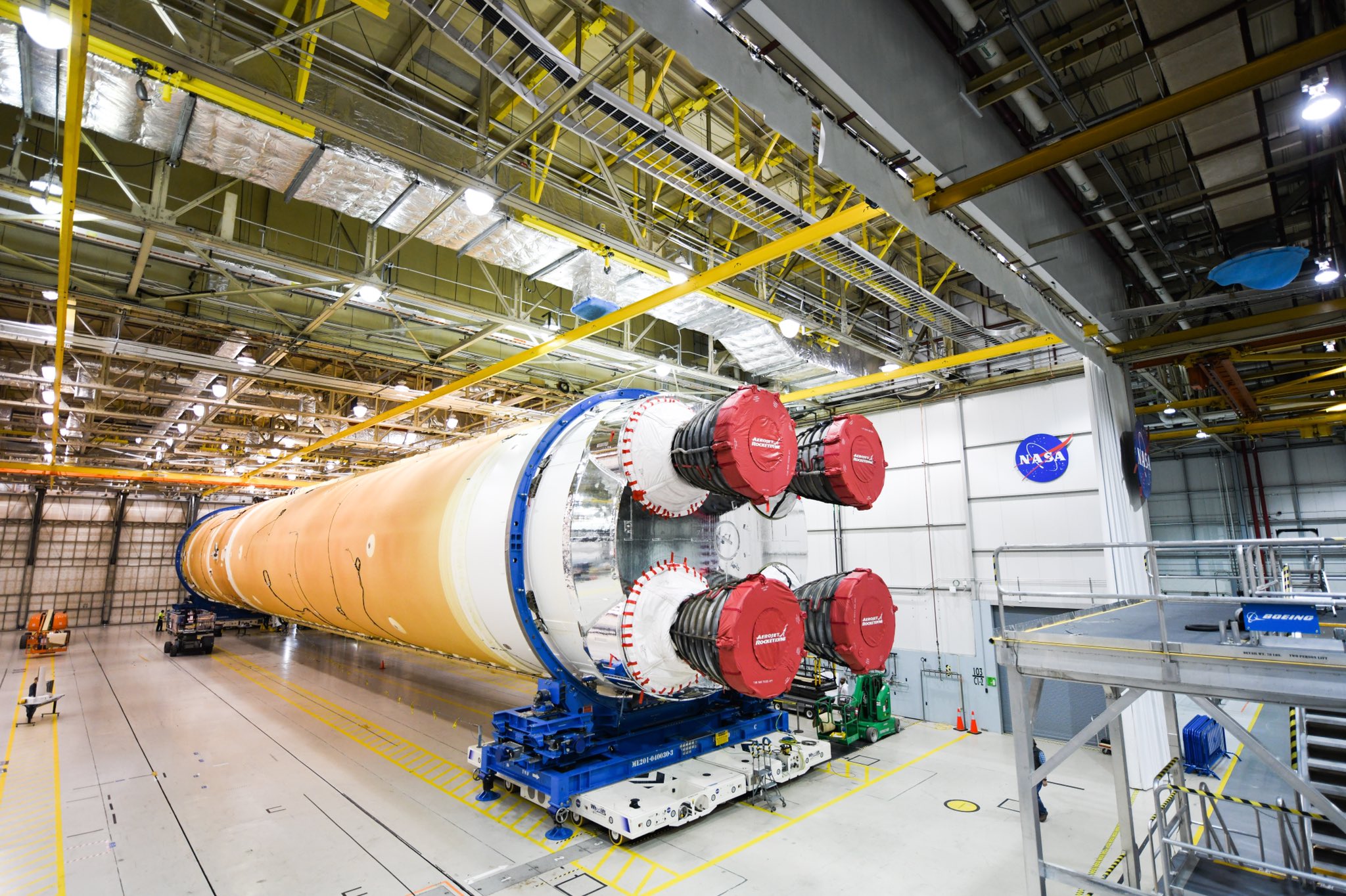
The 212-foot-tall core stage core stage will be loaded onto the over 300-foot-long Pegasus barge later this month for the sea going trip from Michoud to Stennis.
Bridenstine also tweeted 4 photos showing the stage being moved to Building 100 – with the nozzles of the RS-25 engines covered for protection.
Making progress! The massive @NASA_SLS core stage is moving to Building 110 at the Michoud Assembly Facility in Louisiana. There it will be readied for the Pegasus barge and its trip to @NASAStennis. Thank you to the @NASA team for working through the holidays! pic.twitter.com/srpVShw2Jo
— Jim Bridenstine (@JimBridenstine) January 1, 2020
The short river going voyage from Michoud to Stennis takes about 12 hours – or roughly an hour by car.
The SLS core stage, built at NASA’s Michoud Assembly Facility in New Orleans, is the largest rocket stage the agency has built since the Saturn V that sent Apollo astronauts to the Moon.
“The SLS core stage includes state-of-the-art avionics, propulsion systems and two colossal propellant tanks that collectively hold 733,000 gallons of liquid oxygen and liquid hydrogen to power its four RS-25 engines,” according to NASA.
The final assembly work at Michoud involved installing all 4 RS-25 engines and connecting all the propulsion and avionics systems this past fall 2019.
The multistep engine attachment work was led by lead engine contractor Aerojet Rocketdyne in coordination and collaboration with NASA and SLS lead contractor Boeing.
Altogether the core stage will produce a combined 2 million pounds of thrust powered by the four RS-25 engines fueled by liquid hydrogen and liquid oxygen.
The RS-25 engines along with two side mounted solid rocket boosters provide the necessary thrust for the SLS rocket to reach space and propel the Orion deep space capsule and our astronauts to the Moon.
“The completed stage, which will provide more than 2 million pounds of thrust to help power the first Artemis mission to the Moon, will be shipped via the agency’s Pegasus barge from Michoud to NASA’s Stennis Space Center near Bay St. Louis, Mississippi, later this month.
“Once at Stennis, the Artemis rocket stage will be loaded into the B-2 Test Stand for the core stage Green Run test series. The comprehensive test campaign will progressively bring the entire core stage, including its avionics and engines, to life for the first time to verify the stage is fit for flight ahead of the launch of Artemis I.
Last month Bridenstine declared that assembly of the Artemis 1 SLS core stage had been completed at the ‘Artemis Day’ event held on Dec. 9, 2019 at Michoud.
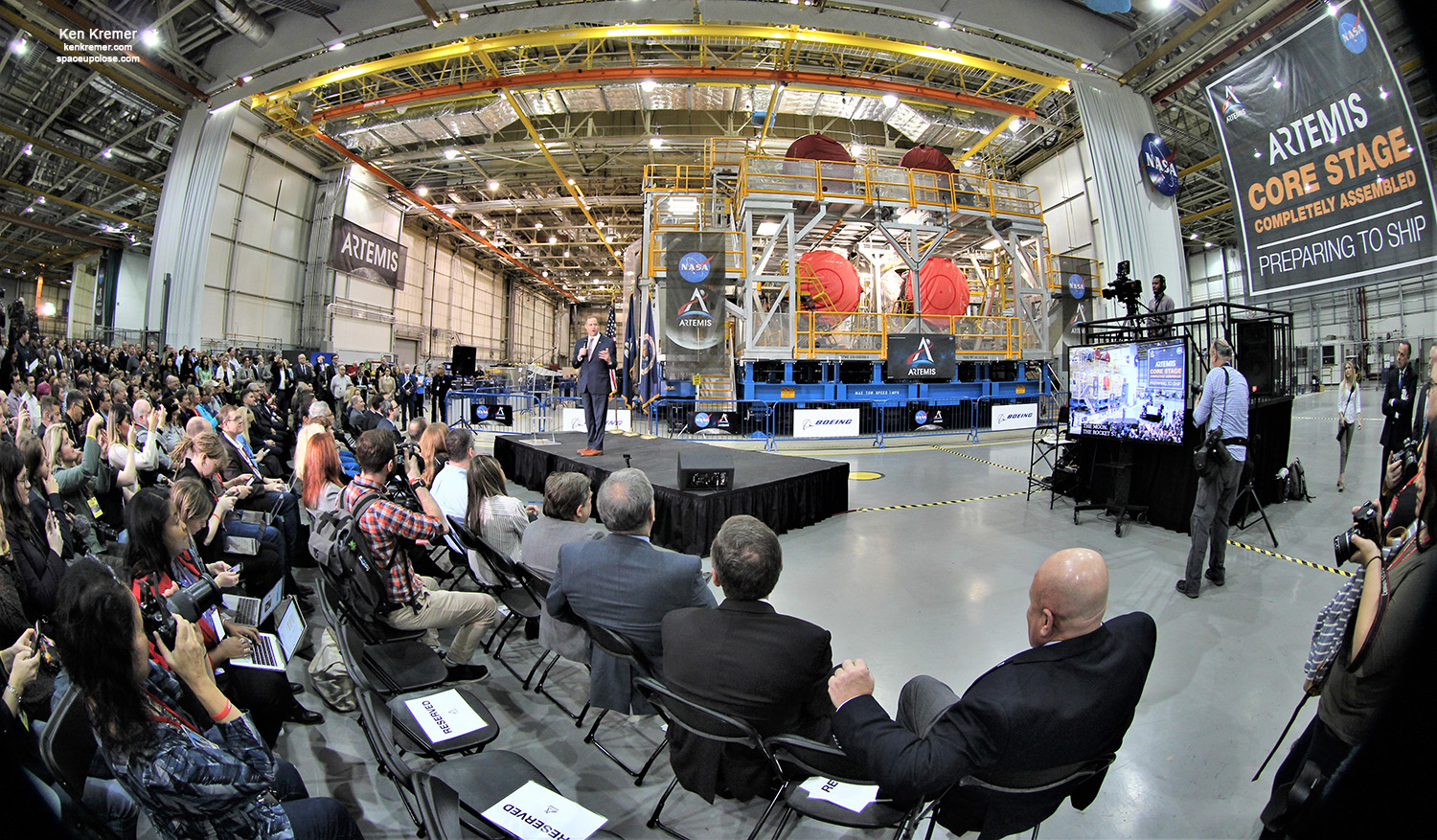
Bridenstine proudly showed off the first fully assembled, 212-foot-tall core stage that was manufactured at America’s ‘rocket factory’ at Michoud – to an exuberant gathering of contractors and space workers, NASA personal and officials, and the media including Space UpClose.
“Today we announce core stage complete for the SLS rocket, the most powerful rocket ever built in human history,” NASA Administrator Bridenstine said at NASA’s Artemis Day event, Dec. 9.
Read our Space UpClose story and photos from attending Artemis Day.
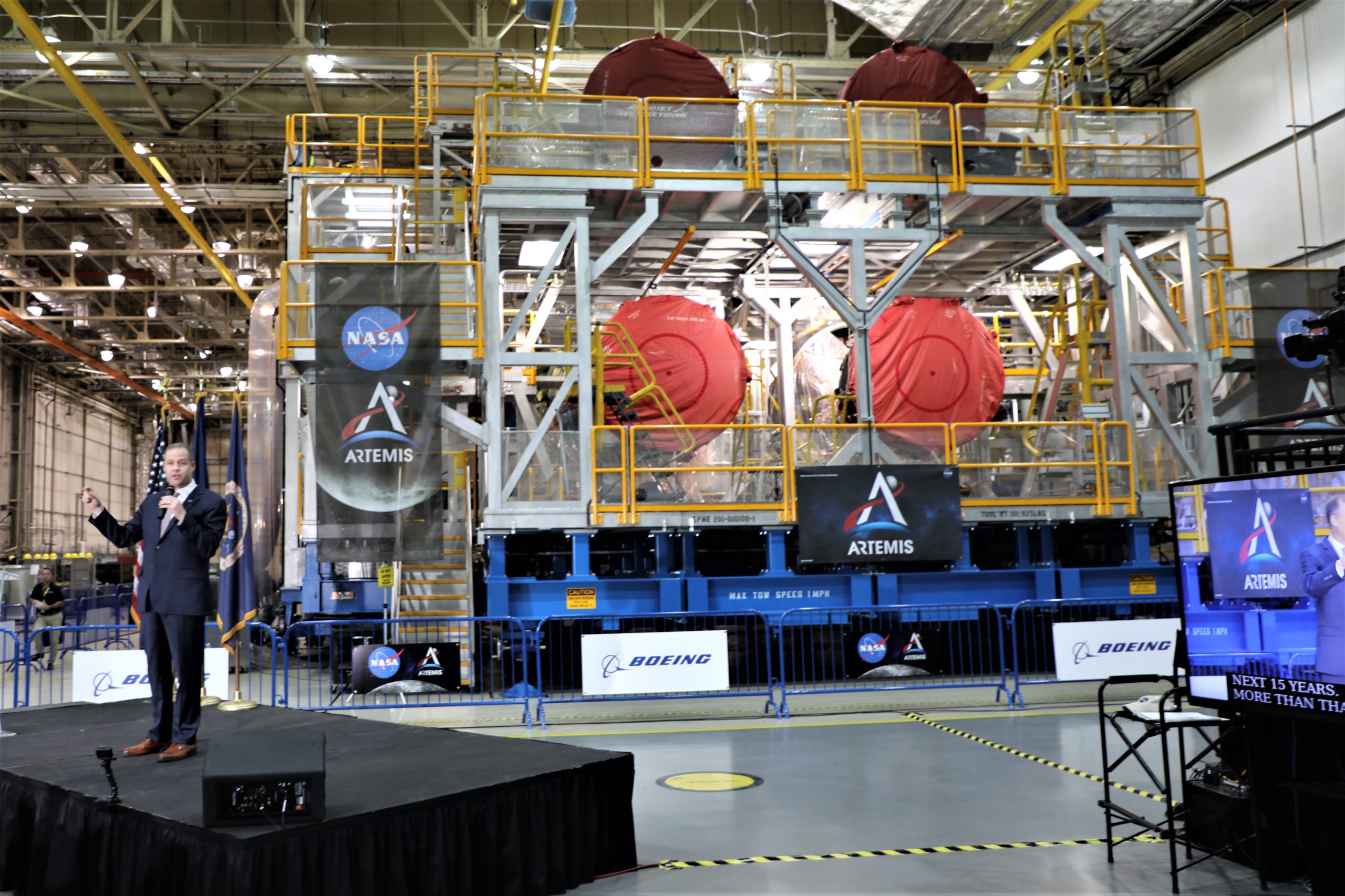
Launch of the first liquid-fueled SLS on the uncrewed Artemis 1 test flight with the Orion deep space capsule around the Moon could take place as soon as late 2020 but more likely in early 2021, Bridenstine indicated.
The overall goal is to build the megarockets for NASA’s Artemis moon exploration program that will enable landing US astronauts including the first woman and the next man on the Moon by 2024 at the lunar south pole.
“Our goal is to launch the first woman and the next man to the south pole of the moon in 2024,” Bridenstine said.
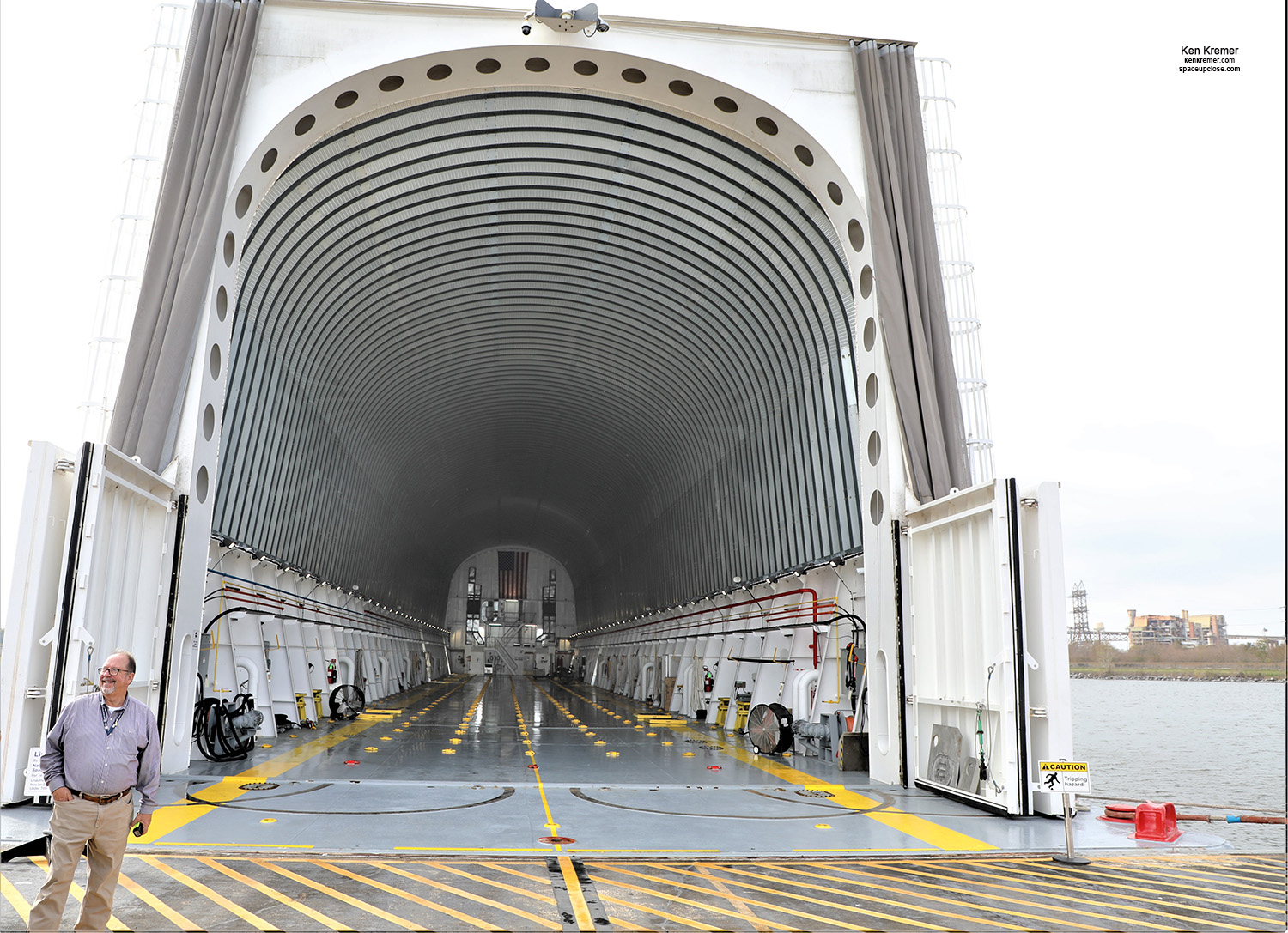
The core stage Green Run tests at NASA Stennis are the final test series ahead of the Artemis I launch. The series will mark the first full test of the entire SLS core stage, including the stage’s extensive propulsion, avionics and flight software systems, according to NASA.
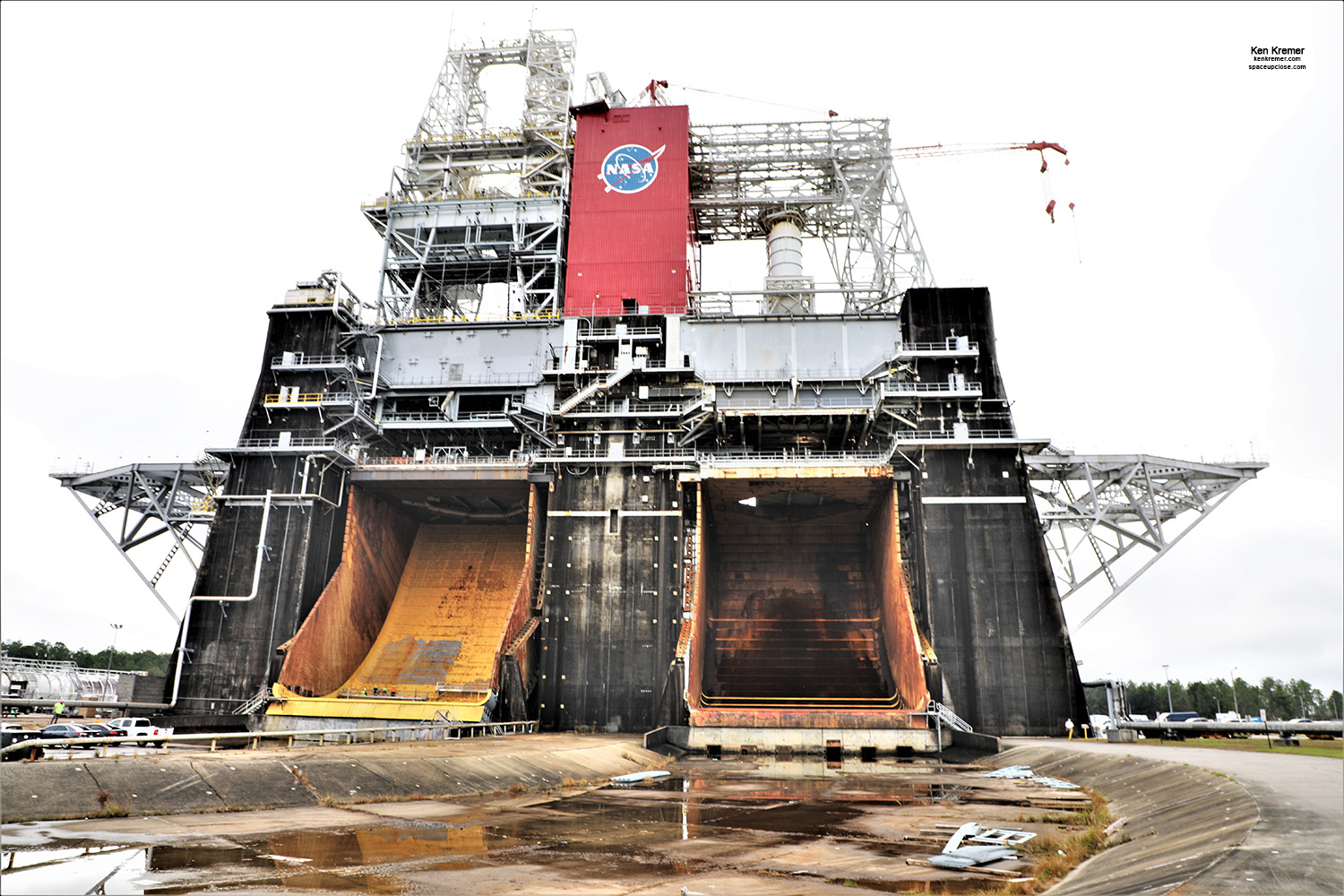
After the team completed engine instrallation and all the propulsion and avionics systems efforts in early December, engineers then conducted a fully integrated functional systems test of flight computers, avionics and electrical systems that run throughout the 212-foot-tall core stage.
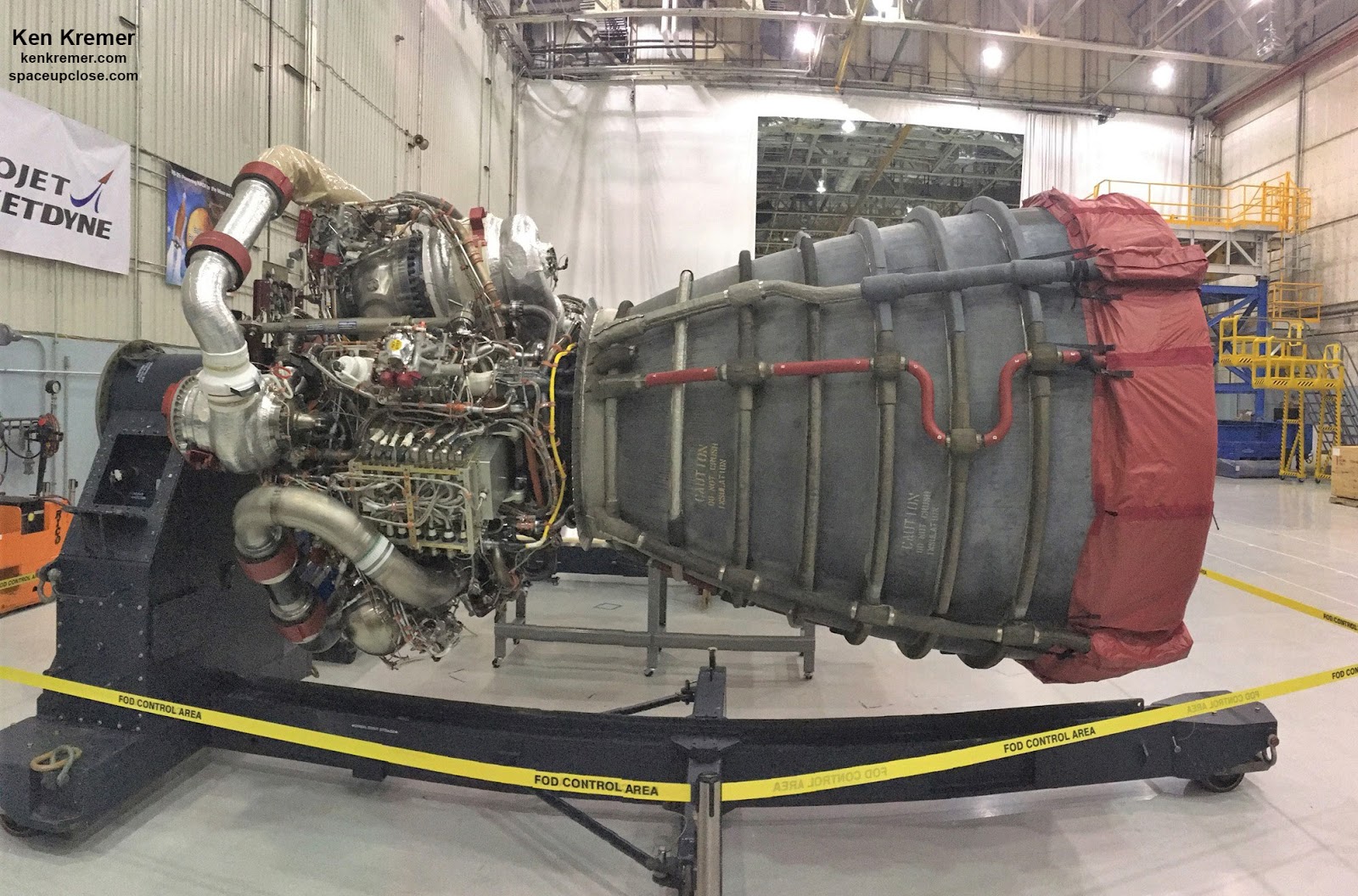
The functional tests lasted several weeks in December to thoroughly check out the engine attachment work to confirm it was accomplished correctly by performing additional testing on all the avionics and electrical systems.
This functional testing is the first time all the flight avionics systems were tested together to ensure the systems communicate with each other and will perform properly to control the rocket’s flight.
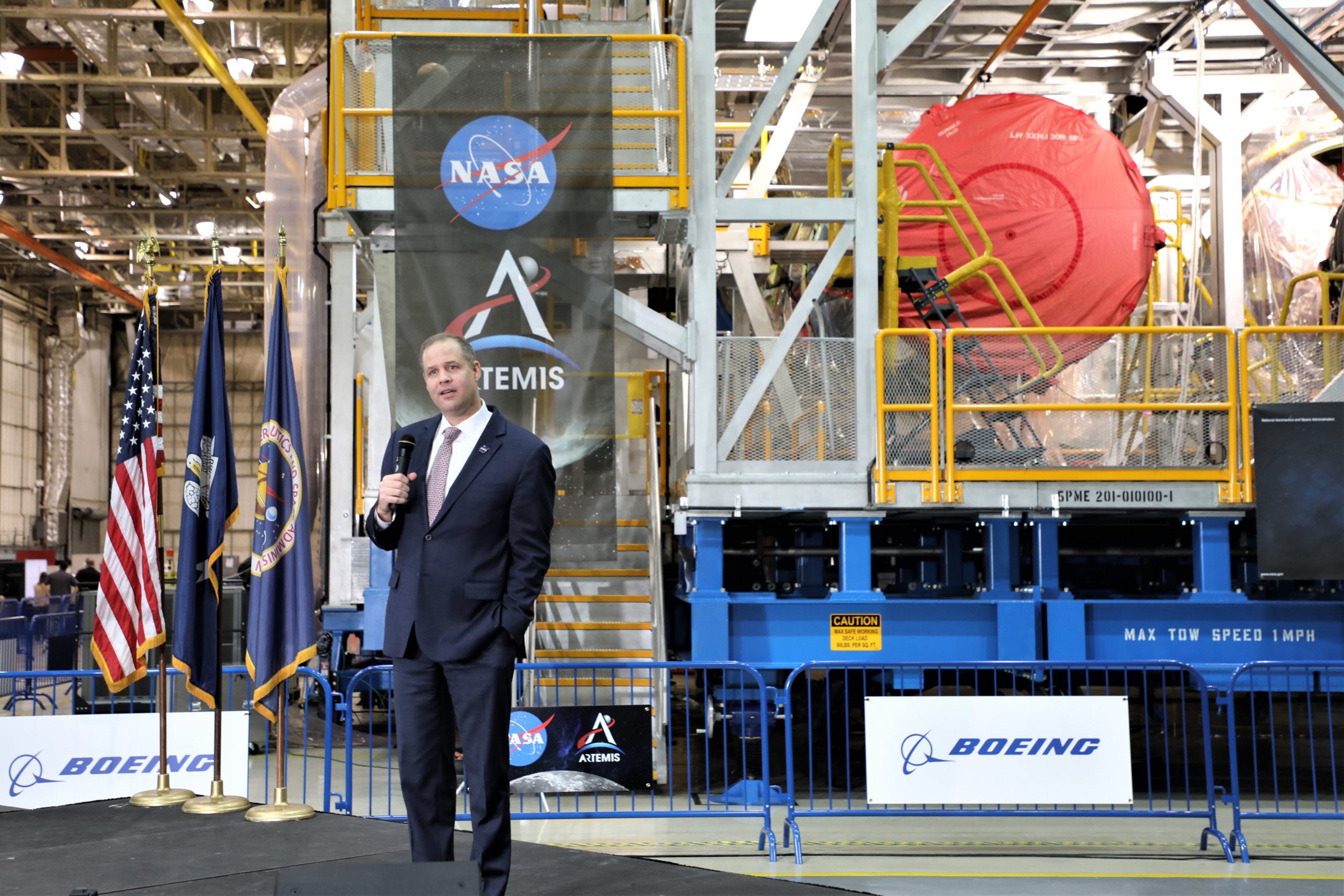
Watch the complete ‘Artemis Day’ announcement by NASA Administrator Jim Bridenstine about the completed SLS core stage.
Video Caption: NASA Administrator Jim Bridenstine gives Artemis update with core stage of Space Launch System on Dec. 9, 2019. The event highlighted the completion of the core stage for NASA’s Space Launch System (SLS) rocket that will help power the first Artemis mission to the Moon. Administrator Jim Bridenstine discussed the status of the agency’s Artemis program and took part in a question-and-answer session with the SLS core stage in the background. Credit: NASA TV
Watch Ken’s continuing reports onsite for live reporting of upcoming SpaceX and ULA launches in Jan/Feb 2020 at the Kennedy Space Center and Cape Canaveral Air Force Station.
Stay tuned here for Ken’s continuing Earth and Planetary science and human spaceflight news: www.kenkremer.com –www.spaceupclose.com – twitter @ken_kremer – email: ken at kenkremer.com
Dr. Kremer is a research scientist and journalist based in the KSC area, active in outreach and interviewed regularly on TV and radio about space topics.
………….
Ken’s photos are for sale and he is available for lectures and outreach events
Ken’s upcoming outreach events:
Jan 5: 7 PM, Quality Inn Kennedy Space Center, Titusville, FL. “SpaceX Starlink and In Flight Abort Test and Boeing Starliner Launches Jan 2020.” Free. In hotel lobby. Photos for sale

